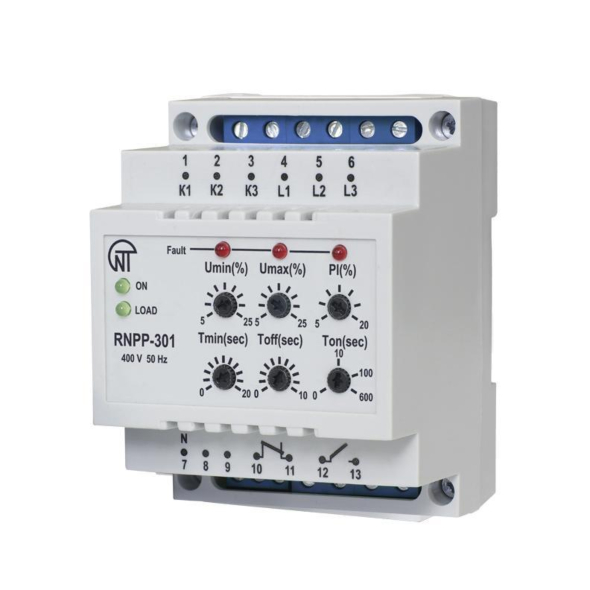Novatek-electro
Development and development of security devices and automation. 5 years guarantee. Products are constantly available in stock or are released in the shortest possible time.

More Information
| Enclosure | 4 DIN (72 mm) |
|---|---|
| Brand | Novatek |
| Rated operating voltage | 230/400 AC (phase/line voltage) |
| Max. load current | determined by a contactor / 5 А |
| Types of protection | Phase failure , Phase symmetry , Phase alternation , Phase sticking , Monitoring of external magnetic starter contacts |
| Operating method | Knobs (regulators) |
| Indication | Indicators |
 Available delivery methods: Pickup from the store, Nova Poshta.
Available delivery methods: Pickup from the store, Nova Poshta.  Payment methods: Bank transfer, Cash on delivery.
Payment methods: Bank transfer, Cash on delivery. RNPP-301 voltage relay is designed to protect three-phase consumers from the main types of electrical network failures, such as:
The device monitors the key parameters of the electrical network and disconnects the load when they deviate beyond acceptable limits.
RNPP-301 also monitors the condition of the power contacts of the external magnetic starter before and after the load is switched on, ensuring their integrity (detecting burning or sticking).
Indicators are displayed on the front panel of the device, which display:
Six knobs on the front panel allow the user to make adjustments:
The device can operate in phase or line voltage monitoring mode (user selectable).
Advantages:
Application Area:
Key Features: